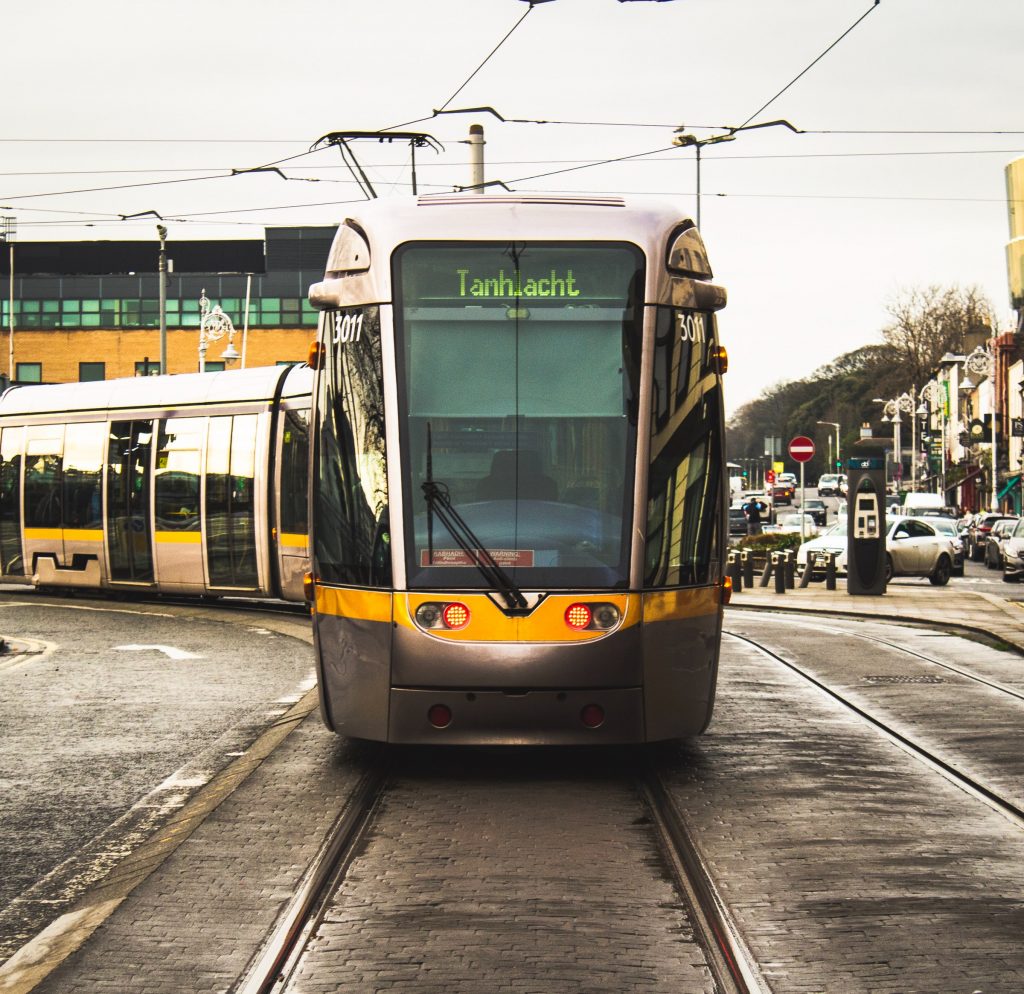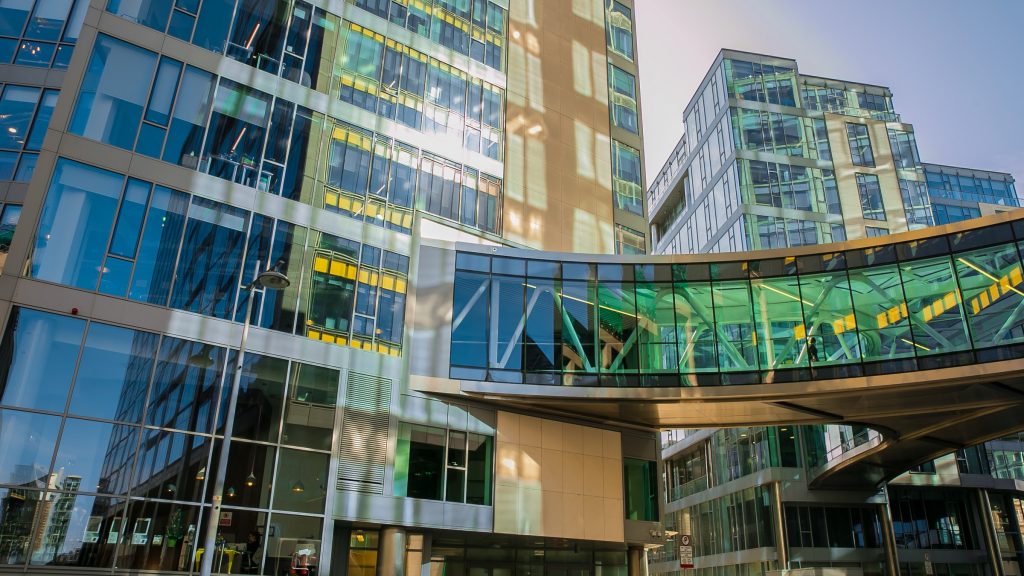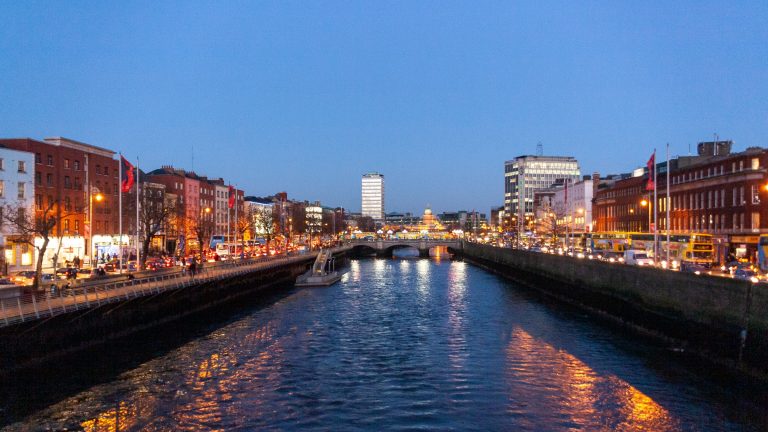Last updated on August 5th, 2022 at 09:50 pm
Dublin is a fascinating city with a long history, a vibrant cultural scene, innumerable bars and restaurants, and a host of natural wonders on its doorstep. Every year thousands of people from the rest of Ireland and abroad move to the city in search of a slice of that elusive but ever-present energy of the capital.
However, as with any big city, there are certain considerations to bear in mind before you make a move to Dublin. While the city is undoubtedly an exciting, vibrant, and often beautiful place to live, it’s not without a few downsides.
In this post we share the pros and cons of living in Dublin.
The Pros of Living in Dublin
The People
Without a doubt, Dublin’s greatest asset are the open, good-natured, and friendly people that call it home. No other city on earth comes close to Dublin for the number of people who will happily chat to a complete stranger about every aspect of life, from a shop cashier to the city bus drivers, and everyone else in-between.
So much of life in Dublin revolves around ‘the craic’, the undefinable energy, buzz, and banter that flows through the city in every pub, club, brunch spot, coffee shop, and anywhere else where two Dubliners come together. Having the craic over a few pints in a cosy pub is a Dublin institution, and one that showcases the fun-loving, irreverent, and social nature of Dubliners.
The Location
Nestled at the mouth of the river Liffey on the coast of the Irish Sea, Dublin is perfectly located to offer its inhabitants access to a wide range of landscapes to explore. The sprawling Wicklow Mountains to the south are a wild playground for the adventurous, with numerous valleys to traverse, mountains to climb, and forests to wander in. The coast is home to some excellent beaches, including several uniquely suited to sea swimming. To the east, the city gives way to quiet countryside within less than an hour’s drive.
Further afield, Dublin is a short budget flight hop away from the capitals of Western Europe, and in the summer the heat of Southern France, Spain, and Portugal are not much further. Thanks to the rise of budget airlines, the city is an excellent spot from which to explore mainland Europe and Scandinavia by plane at a very reasonable price.
The Food
The rich soil of Ireland and the Atlantic rainclouds that water it produce some of the best-quality food in the world, including fine Irish beef, rich, earthy potatoes, and succulent strawberries in summer. On top of the sheer quality of the food, the Dublin food scene has exploded in terms of variety and sophistication in recent years, with all manner of international cuisine available and several Michelin-starred restaurants to savour (if your wallet stretches that far).
For some inspiration on where to eat in Dublin, have a look at some of our detailed guides:
Walkable City

Dublin is surprisingly compact for a capital city and as such it’s quite a walkable city. Although the largest city in Ireland by quite a margin, a majority of the action takes place within the city centre, a relatively small area of the city clustered around the River Liffey. From O’Connell Bridge at the heart of the city where the North and South sides of Dublin meet, a dizzying variety of bars, restaurants, coffee shops, cinemas, monuments, and parks are reachable within easy walking distance. While there is no underground metro system so common in other capital cities, the small size of Dublin means that it is no real loss.
Living in a walkable city is undoubtedly a joy, as you can simply step out of your apartment and let your feet take you on an adventure to a new part of the city.
Public Transport

Although the city centre of Dublin is perfectly walkable, the public transport links connecting the suburbs to the centre of the city have improved markedly in recent years. The addition of the Luas tram system has been a huge boon to the city, adding much needed public transport capacity to complement the long-running Dublin bus network.
Thankfully, the bus system in the capital has also been greatly improved with the addition of real-time updates at most stops. Gone are the days of not knowing if you’ve just missed a bus or wondering if you have enough time to grab a sandwich in a shop. While the updates aren’t perfect, they are reasonably accurate at broadcasting the next bus for your route.
While Ireland’s rail system is less extensive than it was a hundred years ago, there are still great connections from Dublin to the other big cities in Ireland like Cork, Galway, and Belfast. There’s no doubt that you can easily get away with not owning a car if you live in Dublin.
Booming Jobs Market

If you’re considering moving to Dublin there’s a good chance it’s because of a job offer – the city’s jobs market has been booming for some time and isn’t showing any signs of slowing down. A significant number of big tech, pharmaceutical, and professional services firms have a presence in Dublin, and it’s not uncommon for their Dublin branches to serve as the head office for the European, Middle Eastern, and African regions. Facebook, Google, Twitter, and Microsoft all have extensive offices in the capital, for example.
Beyond the big multinationals, Dublin is the home of the majority of large Irish companies, as you would expect. In addition, Dublin’s thriving services industry including the bars, clubs, restaurants and coffee shops of the city are usually in a state of perpetual hiring.
Neighbourhoods to Explore

Beyond the city centre of Dublin, there are numerous suburban neighbourhoods to explore in the outskirts of the city. Many of these have their own unique ‘feel’ to them, often with an atmosphere of a self-contained village rather than a city suburb. Several of these neighbourhoods, such as Howth and Malahide, were established as fishing villages, and still have a seaside feel to them.
Other neighbourhoods closer to the city centre such as Ranelagh and Rathmines still manage to maintain a self-contained air, and can be unmistakably identified as their own self-enclosed locale. New inhabitants of Dublin can rest assured that there is much more to the city to explore beyond the city centre.
The Cons of Living in Dublin
Unfortunately, to go with the many pros of living in Dublin, the city comes with a few cons that should be considered if you’re thinking of making the move to the capital.
High Rent and House Costs
The staggering rise in house prices that occurred in Dublin after the property market crash in 2008 and a commensurate increase in rent costs is something on the lips of nearly every Dubliner. A chronic undersupply of new apartments and houses in the years after the crash and a steady influx of new arrivals into the city, both from the rest of Ireland and abroad, have led to an inexorable squeeze upwards on the cost of housing.
While the issue is recognised as a problem by local government, the lack of supply and outsized demand is likely to continue well into the future, as there is simply not enough construction capacity in the country to build the sheer number of housing units required to meet demand.
While it may be cold comfort to those looking to rent or buy a house in Dublin, it is fair to say that in recent years, the housing crisis is no longer an issue in the capital alone, with house prices and rent costs steadily rising in most parts of the country.
Weather

While the weather in Dublin isn’t an issue for those already in Ireland planning a move to the city, anyone moving to Dublin from abroad would do well to consider their tolerance for drizzle. As an island in the Atlantic Ocean, Ireland is famous for its rainy days, and Dublin is no exception.
That said, there are plenty of people that suit Ireland’s climate of warm summers and cool winters and a general lack of extreme weather events. In addition, Dublin is the type of city to wear an ambience of rainy, gloomy beauty well.





